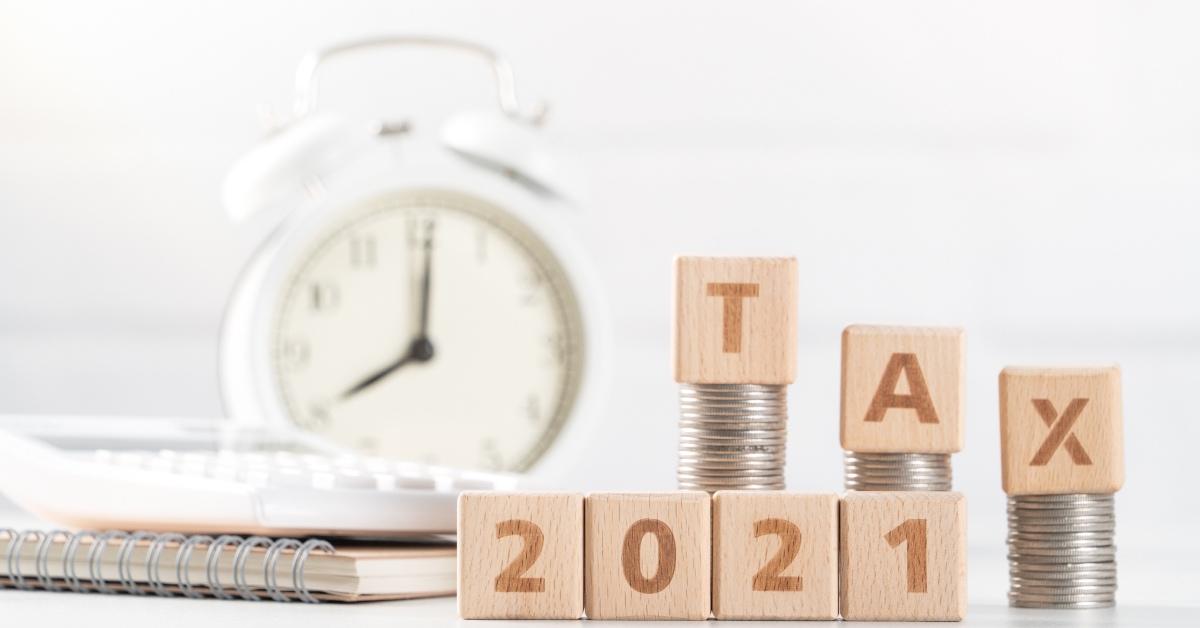Many Will Receive Smaller Tax Refunds in 2023 — Here Are the Top Reasons Why
Because many tax laws and credits reverted back to 2019 guidelines or were eliminated, taxpayers are likely to receive smaller tax refunds in 2023.
Feb. 13 2023, Updated 4:45 p.m. ET

Although 2020 and 2021 gave rise to some rather large hurdles, taxpayers did receive significant tax breaks that allowed many to reduce their tax liabilities and collect larger refunds. Unfortunately, the same can’t be said for 2022. Because many tax laws and credits reverted back to 2019 guidelines or were eliminated, taxpayers are likely to receive smaller tax refunds in 2023.
Tax refunds are issued when an individual pays more in taxes throughout the year than necessary. The refund simply implies that the government owed you money rather than vice versa. Tax refunds are also issued when your tax liability is reduced to zero and are eligible to receive refundable tax credits.
To find out more on why 2023 tax refunds will be smaller and when you can expect to receive yours, keep reading!
Why will tax refunds be smaller in 2023?

The IRS will be issuing smaller refunds to taxpayers in 2023 for these reasons:
- The CTC (Child Tax Credit) was reduced to 2019 levels. Qualifying taxpayers will only be entitled to collect a maximum of $2,000 per eligible child when filing 2022 taxes.
- No additional stimulus payments are being issued with 2023 tax refunds.
- You won’t be able to deduct your charitable contributions unless you itemize your deductions.
- Income thresholds were reduced for the EITC (Earned Income Tax Credit).
- Social Security taxable income limits increased.
Although this may sound disappointing, especially to those who were depending on a large refund, Boston University economics professor Dr. Laurence Kotlikoff shared with Market Realist some tips that can make filing taxes less burdensome.
According to Kotlikoff, who was ranked by The Economist as one of the world’s 25 most influential economists, taxpayers “can make 2022 IRA contributions through April 18, 2023.” The professor also added that “given how inflation raises everyone's effective marginal tax brackets, Roth IRA contributions are a relatively better bet than used to be the case.”
So, why is this important? Well, because the IRS allows you to deduct some or all of the contributions you make to a traditional IRA, you could receive a tax credit and lower your tax liability. Just so you’re aware, the IRS generally only taxes traditional IRAs when they are distributed.

How do 2022 tax refunds compare to 2021?
Tax refunds are reducing significantly in 2023 (for the 2022 tax filing season) due to the fact that many rules didn’t carry over from 2021 to 2022. For example, in 2021, the CTC was $3,000 per child ages six through 17 and $3,600 per child under the age of six. In 2022, the CTC was reduced back to $2,000 per qualifying child.
In 2021, certain taxpayers could also claim as much as $8,000 for the Child and Dependent Care Credit, whereas in 2022, the maximum amount of expenses were reduced to $3,000 for one person or $6,000 for two or more people. Some of the other changes that are impacting 2023 tax refunds include:
- The income limit for the EITC was reduced for all situations. For example, in 2021, a single taxpayer with no children was able to receive the credit if they earned $21,430 or less. However, that limit was lowered to $16,480 in 2022.
Another major change Kotlikoff pointed out to Market Realist, though it isn't bad, was that “those who are 72 this year do not need to take required minimum distributions from their IRAs thanks to the Secure Act 2.0.” However, Kotlikoff does warn that if you wait to take distributions, it “may cost you money.”
When should I expect to receive my 2023 tax refund?
The IRS began accepting 2022 tax returns on Jan. 23, 2023. The agency typically issues tax refunds within 21 days after receiving your return, though it can take longer. Before a refund can be issued, it must be accepted and approved by the IRS.
Now, if you claimed the EITC or CTC on your 2022 tax return, you’ll have to wait until mid-to-late February for your 2023 tax refund to drop. The law requires that the IRS hold onto the entire refund up until this time so that the IRS has time to review returns for any discrepancies. Last year, some taxpayers who filed early started receiving their refunds around Feb. 21.
Although you may have to wait for your entire tax refund to arrive, Kotlikoff says it is unlikely that tax refunds will be delayed in 2023 seeing that the IRS has received more funding. But, if you want to gain access to a portion of your tax refund early, you can file now with tax preparation companies like TurboTax and request a tax advance.
